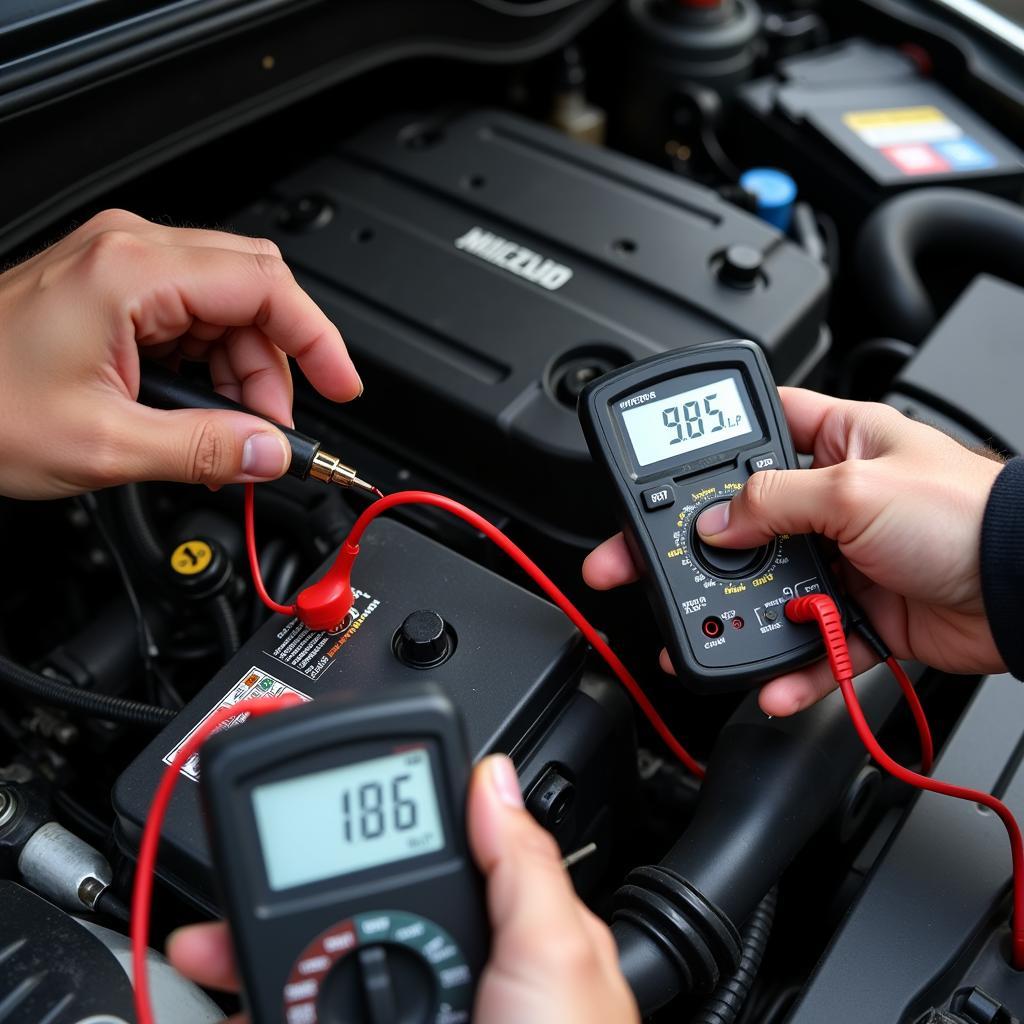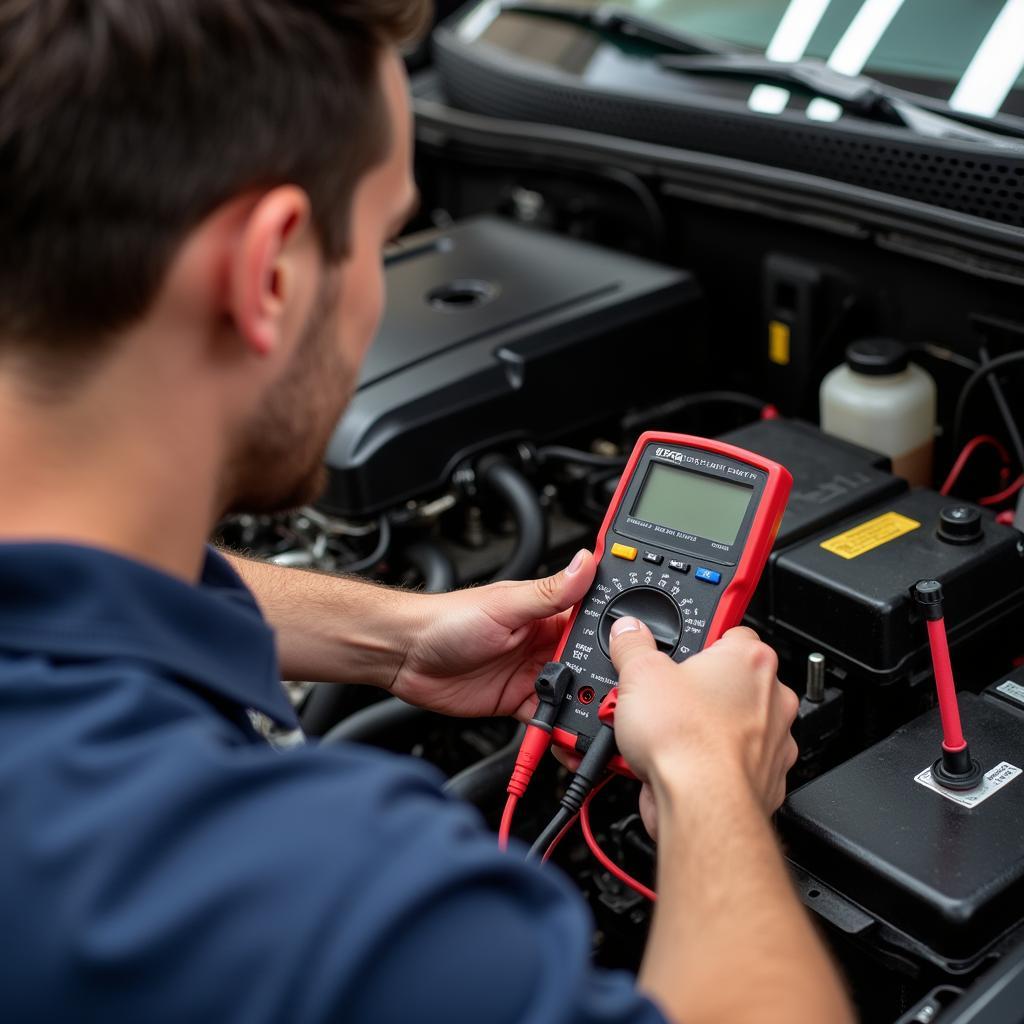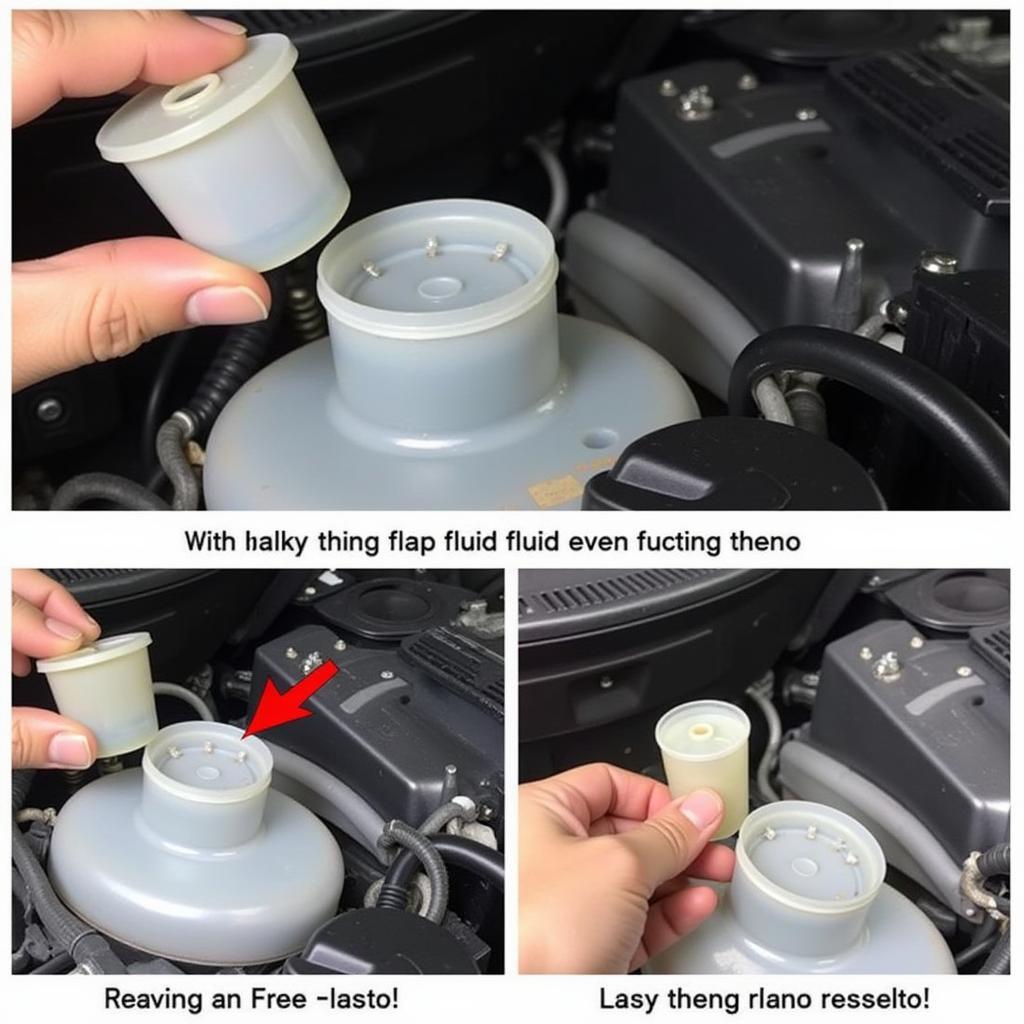You’re driving down the road in your trusty 1993 Nissan Sentra when suddenly, you see it: the dreaded battery and brake warning lights illuminate your dashboard. A sinking feeling might hit your gut, but don’t panic! This is a common issue, particularly with older vehicles, and it doesn’t always signify a catastrophic problem. Let’s dive into the potential causes and solutions for when your Sentra throws you this warning light combo.
Understanding the Culprit: Your Sentra’s Charging System
The most common reason these two warning lights turn on simultaneously in a 93 Nissan Sentra is a problem within the charging system. The charging system, comprised of the battery, alternator, and voltage regulator, ensures your battery stays charged and powers your vehicle’s electrical components.
Here’s why the battery and brake lights often come on together: when the charging system malfunctions, it can cause a voltage drop. This drop can trigger the brake warning light even if there’s nothing wrong with your brakes.
Think of it like this: your car’s electrical system needs a certain amount of “pressure” (voltage) to function correctly. A failing charging system component is like a leak in a hose, reducing that pressure and causing warning lights to flicker on.
Common Causes and Troubleshooting Tips
1. Worn-Out Alternator
The alternator is the powerhouse of your Sentra’s charging system. It generates electricity while the engine is running, replenishing the battery and powering electrical components. A failing alternator is a prime suspect when you encounter this warning light duo.
Signs of a failing alternator:
- Dimming headlights, especially when accelerating
- Whining noise coming from the engine bay
- Electrical components, like the radio or power windows, working intermittently or sluggishly
Troubleshooting:
- Check the alternator belt: A loose or worn alternator belt can prevent the alternator from functioning properly. Inspect the belt for cracks, fraying, or looseness. If needed, tighten or replace it.
- Have the alternator tested: An auto parts store or mechanic can test your alternator’s output using a multimeter.
 Inspecting Alternator Belt
Inspecting Alternator Belt
2. Dying Battery
While a failing alternator is a frequent culprit, a dying battery can also contribute to this warning light double feature. Your battery provides the initial power to start your Sentra, and a weak battery might not be receiving enough juice from the alternator to stay charged.
Signs of a dying battery:
- Engine cranks slowly when starting
- Clicking sound when turning the key
- Battery warning light flickering even after the engine starts
Troubleshooting:
- Test the battery: A mechanic or auto parts store can test your battery’s charge and health.
- Jump-start your Sentra: If the battery is simply drained, jump-starting might temporarily solve the problem. However, it’s crucial to address the underlying cause of the drain.
 Testing a Car Battery
Testing a Car Battery
3. Faulty Voltage Regulator
The voltage regulator, often integrated into the alternator, acts like a gatekeeper, ensuring a consistent flow of electricity from the alternator to the battery and other components. A faulty voltage regulator can disrupt this flow, leading to voltage fluctuations and triggering those pesky warning lights.
Signs of a faulty voltage regulator:
- Overcharging battery: You might notice a sulfurous smell, indicating excessive battery gassing.
- Undercharging battery: Your battery might consistently drain, requiring frequent jump-starts.
- Flickering or overly bright headlights
Troubleshooting:
- Voltage regulator testing: It’s best to have a qualified mechanic test the voltage regulator, as it often requires specialized equipment.
4. Wiring Issues
Like any aging electrical system, your 1993 Sentra’s wiring can become corroded, loose, or damaged over time. These wiring gremlins can disrupt the flow of electricity within the charging system, leading to voltage drops and those familiar warning lights.
Signs of wiring issues:
- Flickering dashboard lights
- Intermittent electrical problems
- Burning smell coming from the dashboard or engine bay
Troubleshooting:
- Visual inspection: Carefully examine the wiring connected to the battery, alternator, and voltage regulator for any visible damage, corrosion, or loose connections.
- Professional inspection: Electrical system diagnosis can be complex, and it’s often best left to a qualified mechanic with the proper tools and expertise.
 Mechanic Checking Car Wiring
Mechanic Checking Car Wiring
Don’t Ignore the Warnings
While seeing both the battery and brake warning lights on your 1993 Nissan Sentra’s dashboard might seem daunting, remember that early detection and diagnosis are key. Ignoring these warnings could lead to more severe problems, including a complete electrical system failure or being stranded with a dead battery.
Pro Tip from John Miller, ASE Certified Master Technician: “Never ignore these warning lights, especially in an older vehicle. Addressing a minor issue now, like a worn alternator belt, can save you from a major headache and expense down the road.”
Conclusion
By understanding the interconnected nature of your Sentra’s charging system and the potential culprits behind those illuminating warning lights, you can take the right steps towards a solution. Remember, regular maintenance and timely inspections can help prevent many of these issues and keep your 1993 Nissan Sentra running smoothly for years to come.


